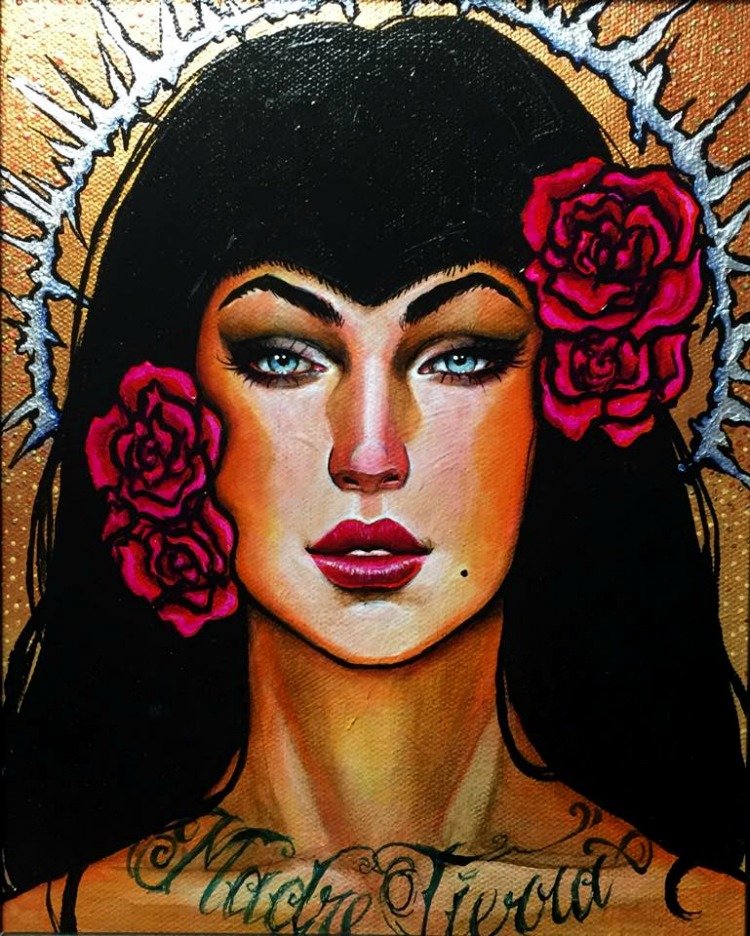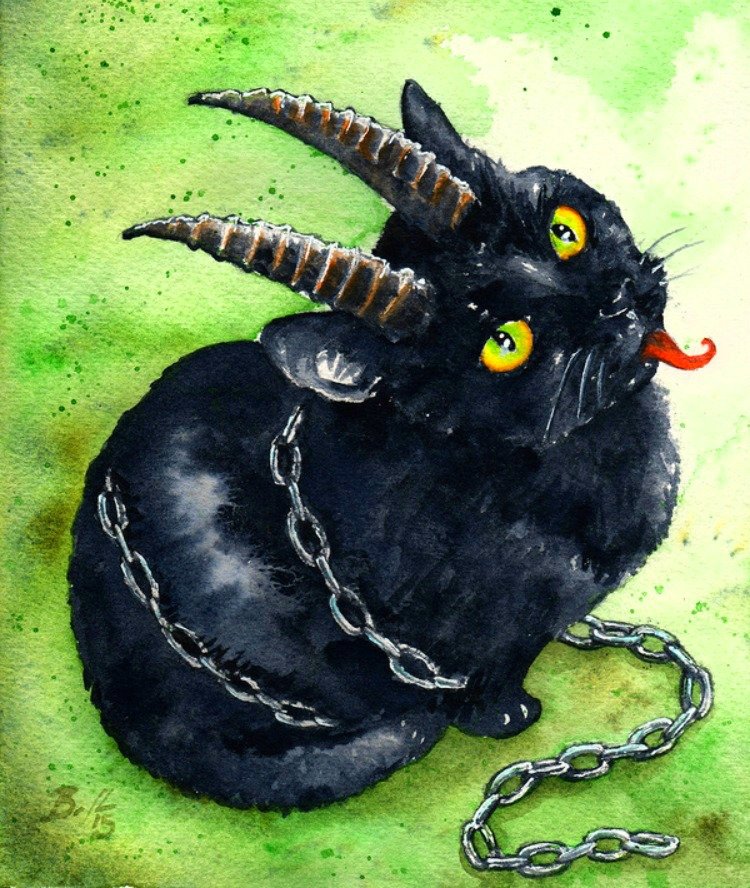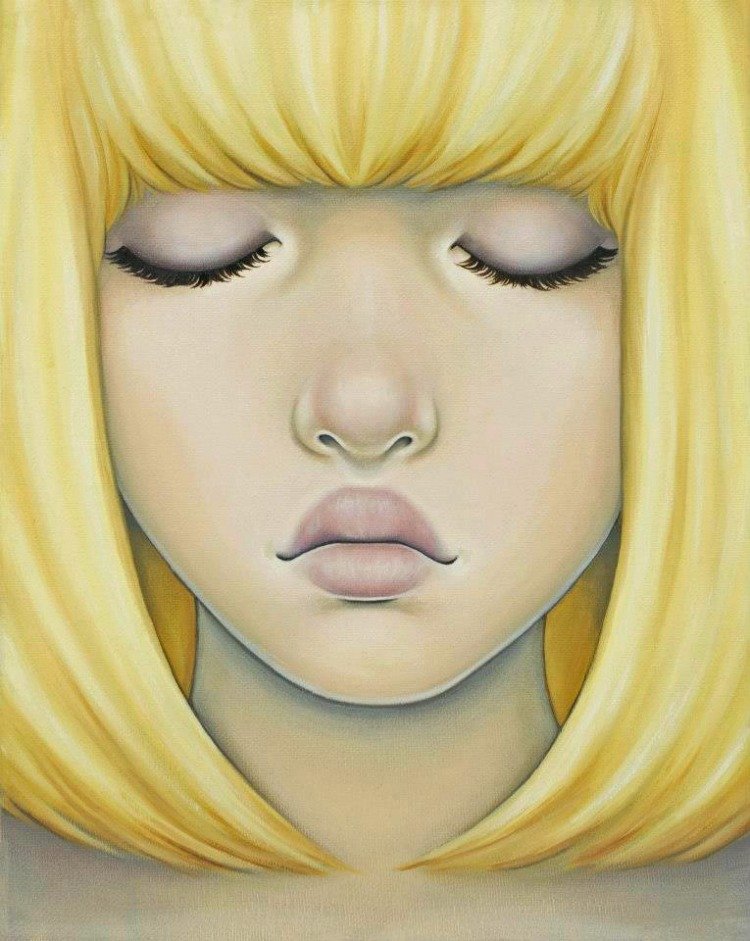At the Red Dragonfly gallery, we have the pleasure of interacting with a lot of very talented artists.
Sadly, many of them have little or no familiarity with dealing with the "business end" of being an artist. Quite a few are of the belief that it's "not necessary" for them to know anything about business and that they are just artists "for art's sake"... but the mere fact that they have contacted us is a statement that they do want to "do" something with their art, aside from simply creating it.

"Madre Tierra" original painting by Julie Zarate
Even if you're not trying to "make a living" from art-- maybe you just want to sell a few pieces to fund buying more art supplies-- there are certain simple basics that will help make life easier for both you, as well as potential buyers and art galleries.
Be Relevant to Your Sales Outlet!
Before you even think about taking your work to a gallery for sale, take a moment to familiarize yourself with the potential venues you're considering.
Galleries often focus on particular niches and themes, so take a moment to look around. Does your art seem like it would "fit" where you're about to offer it?
Few things can leave a more "sour note" in a gallery curator's day than an artist who makes it painfully obvious that they never even looked at what the gallery already has on its walls... by presenting their 8x10" landscape watercolors to a venue that specializes in large format abstract art.
Present your work as you'd like it to be seen!
Whether you like it or not, presentation matters!

"Krampus Kitten" print from original watercolour by Braden Duncan
Think about other things you have in your life-- from groceries to clothing to cars-- and how they are presented in an "appealing" manner when offered for sale. Art is no different... attractive presentation also tells both buyers (if you're attending an art show with your own booth) and art galleries that you "value" your own work... which-- in turn-- means that they should value your work.
It's surprising how many times we're presented with a manila folder full of loose photos, or a roll of random canvases, or a portfolio with 20 watercolors of all sizes with a hopeful "can you sell these?"
Often our indifference and lack of enthusiasm isn't as much a reflection on the quality of your work, as it is a reflection on the amount of work and expense it would require for us to get your work "sales ready."
And-- with a few exceptions (or if you have a "special arrangement")-- most galleries do not consider it "their business" to "finish" your work for you.
Sign your Work!
This may seem patently obvious, but we do see our share of unsigned work. We also get our share of "does that really matter's." Yes, it matters. If you're not willing to sign off on your work, why should we? And you don't see a lot of exhibits of "New Watercolours by Who Knows Who?" or "Abstract Oil Paintings by Anonymous."
Let People Know Who You Are!

"Red Dragonfly" photographic print by Viola Ware
If you're going to start selling your art-- especially through a gallery setting-- you should have at least a minimal bio. At the very least, a few sentences about you, and your artistic vision.
Surprisingly many artists don't think to make a bio, and we have even had a few (well meaning!) ask for a sheet of paper and a pen so they could write one out while sitting in the gallery.
Stand out by being better organized than that-- have it ready before you visit a gallery!
Have at Least and IDEA of Pricing!
"How to price my work" is often one of the most awkward issues for artists-- especially if they are new to the business of selling art.
These days, however, pricing is a little easier than it used to be... you have the Internet to research what 1000's of other artists are charging for their work.

"Savor the Sweetness" original oil painting by Amy Katherine Minchew
When you come to a gallery to sell your work, have at least a rudimentary idea of what you want to make on each piece. Keep in mind that if you're approaching a consignment based gallery, they gallery will take anywhere from 25-50% of the final sales price as a commission... so consider that in your pricing.
And be willing to be flexible! A gallery curator with sales experience is your ally, not your enemy. You share a common desire to see your work sold... so be open to listening to suggestions for "price adjustments."
However, it's ultimately not the gallery's job to price your work! They can make suggestions, but the final decision is yours.
Bring it "Ready to Hang" (or Sell)!
Unless you are working with a gallery that's also a framing shop-- and they have asked to frame your work-- bring your work in a state where it's ready to sell; where it's ready for people to take it home.
Framing can be very expensive, and quite a few galleries (ours included) will hang unframed work on canvas, leaving the framing to the discretion of the eventual buyer. But it needs to be signed and ready to hang.
For watercolors and other work "on paper," if you don't want to invest in framing, at least make a visit to a store that sells pre-cut mats (or buy some online) and mount your work "matted;" then put the matted work in protective poly sleeves with a "backboard" (can be cardboard or thin foamcore) so we can present your work directly in one of our print racks.
Not only will doing so make your work ready-to-sell, it will also keep it from getting "shopworn" if you're showing it to multiple potential galleries.
Bring us Your GOOD Stuff!

"Sustenance" by Jesse Link
This may seem very obvious, but always bring your best work when you're looking to get into an art gallery setting.
Art galleries are not the place where you should try to park "all the pieces that didn't sell at this summer's outdoor art shows." All that will serve to do is set up a disappointing experience for both you-- as the artist-- and the gallery.
Hand-in-hand with this, please don't bring us obviously "shopworn" art! We've been presented with more than a few pieces that seemed like they had been traveling around in the trunk of the artist's car for several years... as well as some work that was so old it bore no resemblance to the artist's current style.
Unless you're already "seriously famous," offload your old work through venues like Etsy or Artfire (or your own web site), not through galleries that specialize in presenting new work.
Have Realistic Expectations!
Art galleries are seldom your solution to making all your dreams come true overnight!
In having one gallery for 15 years and another now in its 2nd year-- and having curated 100s of shows-- I can count on one hand the number of shows/exhibits that have come even close to selling out in a typical 60-day period. And when I say "close," I mean more than half the art sold.
What's more, each of those shows were done for established artists who had an existing fan base and extensive mailing lists of their own, to supplement the gallery's client list.
If you are in the early stages of your career as an artist, gallery representation-- in the beginning-- will likely earn you more feedback than sales.
Don't feel insulted by that! It takes a while to get your name out in front of people, and to establish a following.
In the greater world, it is generally said that it takes five years of dedicated effort to become "an expert" at something, and it seems like art (and being an artist) is really no different from that.
In Closing...
I expect most of these points might have seemed "painfully obvious" to you, but it's surprising how often they are overlooked.
Whatever you decide to do when it comes to presenting your art to the world, just remember that "putting your best foot forward" can make a LOT of difference!
How about YOU? Where are you, in your journey as an artist? Have you shown your art in a gallery? Have you tried outdoor art shows, as "your own sales outlet?" Do you sell your art inline? Would you LIKE to have your art in a gallery show? If you're an experienced artist already, any other suggestions to make to up-and-coming artists? Share your comments and experience-- be part of the conversation!
The Red Dragonfly is an independent alternative art gallery located in Port Townsend, WA; showcasing edgy and unique contemporary art & handmade crafts by local and worldwide artists. All images are our own, unless otherwise credited. Where applicable, artist images used with permission.
